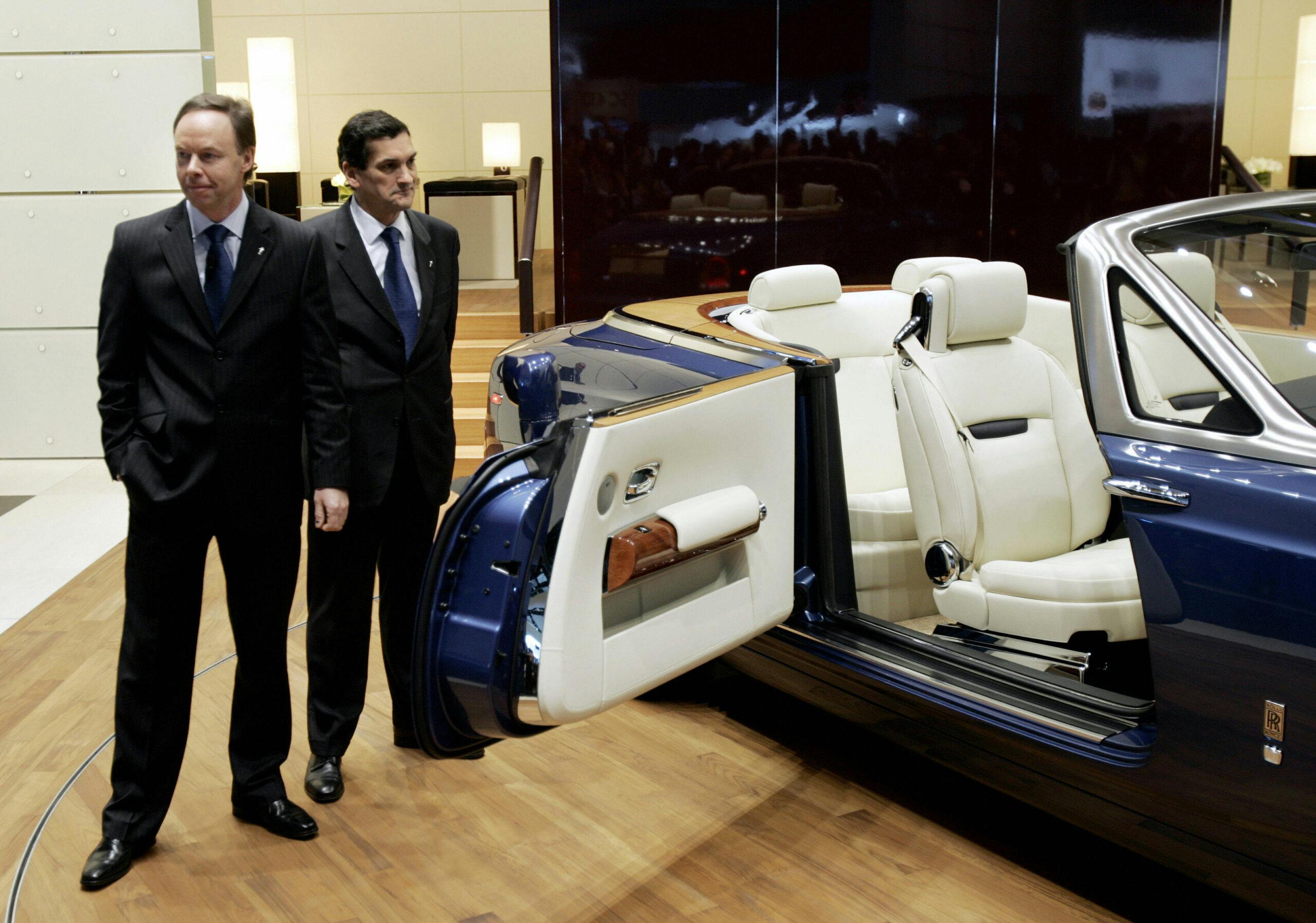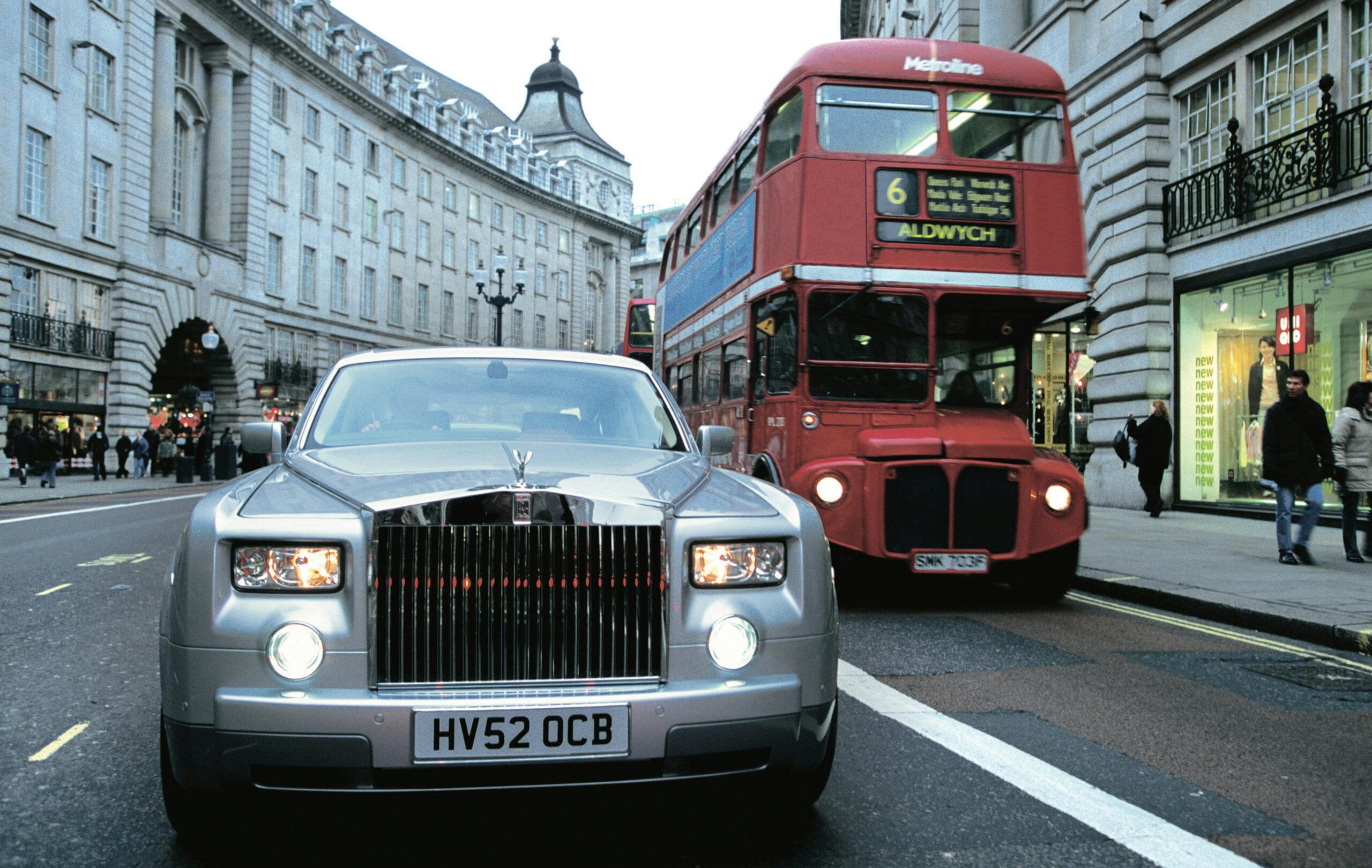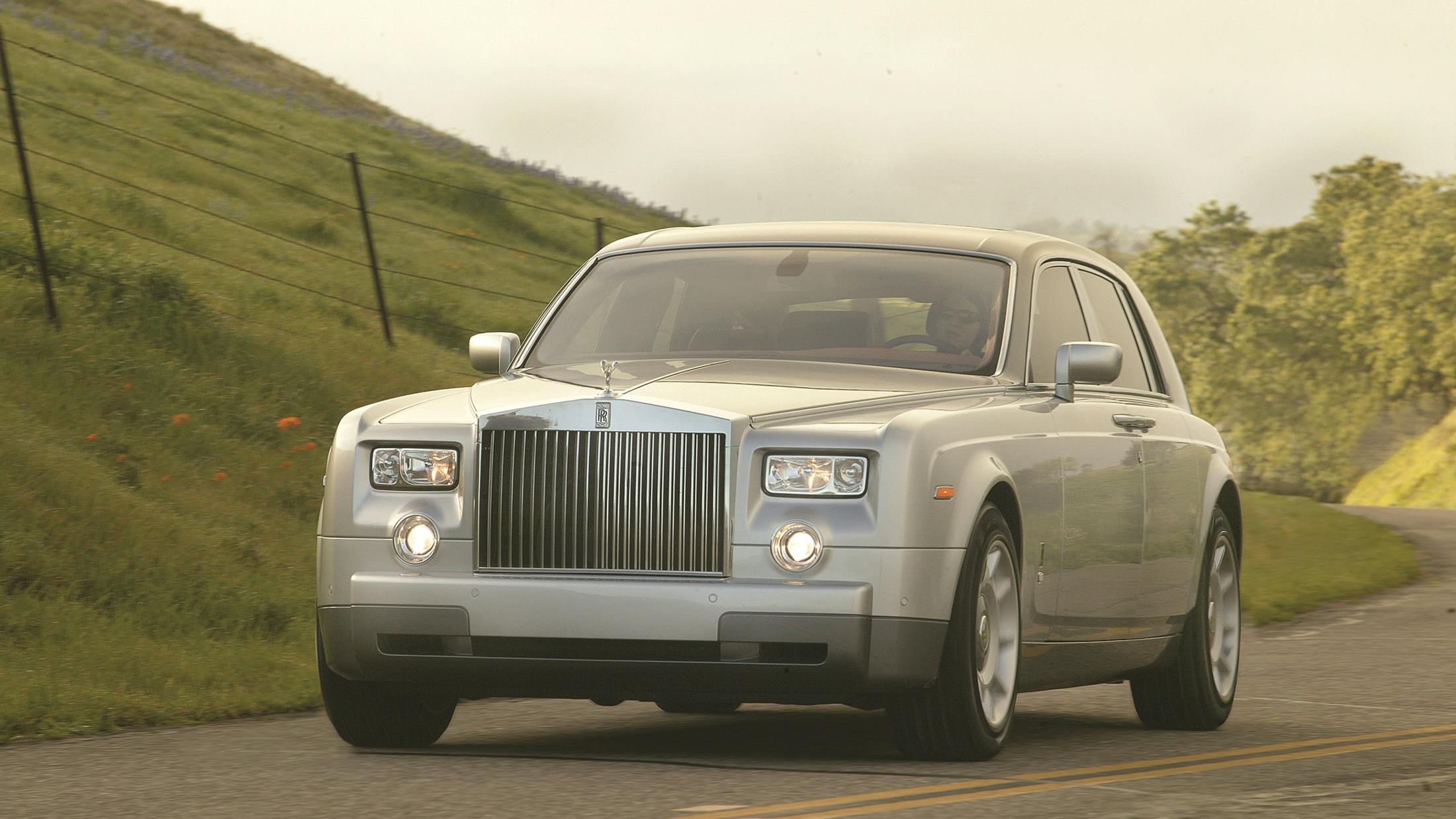Media | Articles
When BMW Bought Rolls-Royce, It Needed a Great Design Boss. It Got One with Ian Cameron.

Design directors don’t draw a thing.
Of all the things I say during class to my students during the first year of their Transportation Design bachelor’s degree program, this always seems to be the statement that stuns them the most.
I don’t blame them.
After all, an automaker’s head of design is usually present at new vehicle launches and media events and, as a result, is the person who typically gets the credit (or takes the fall) for everything, despite not having physically drawn a single line.
That’s not to say design VPs don’t earn their keep, though: Quite the contrary. Get a great design director, and all the creatives in the team should thrive, resulting in highly desirable vehicles and years of healthy profits. But not every great designer makes for a great design manager. Overpromote the wrong person, and even the sharpest creative team will soon sputter and misfire. The result usually is abject mediocrity, swiftly followed by a painful trip to the bottom of the sales charts.
Marketplace
Buy and sell classics with confidence
Rolls-Royce got a new design director in 1998 following its acquisition by BMW. And, as we look back at this period, it’s safe to say that the British marque got the best possible design boss right when it needed one the most. To say Rolls-Royce was at a crucial juncture when Ian Cameron took over as its design director would be quite an understatement. Sure, BMW had just snatched the storied British icon after a bitter war with Volkswagen, but what the Bavarians got for their effort was little more than the rights to the name.

Cameron, as you are likely aware, was murdered at his home in Germany on July 12. Police tracked a 22-year-old suspect to Paris, where he was arrested. The motive remains a mystery. Cameron, who retired from Rolls-Royce in 2013, was 74. The Phantom was one of his many significant and impactful contributions to automotive design.
Rolls’ historic production site in Crewe, England, remained with Volkswagen, which had just bought Bentley. Moreover, while Rolls-Royce still was one of the world’s most prestigious automobile brands, decades of underinvestment meant not even the marque’s staunchest loyalists could repeat Rolls’ old claim of producing “the best cars in the world” with a straight face.
Still, few doubted BMW’s ability to engineer a world-beating luxury limousine if it wanted to. But whether the market would accept the new cars as “proper” Rollers was another battle altogether—one in which success was far from guaranteed, and design was to play an essential role.

As they reinvented Rolls-Royce for the new millennium, Ian Cameron and his team had to strike the most elusive of balances. On one hand, the new model had to be instantly recognizable as a Rolls-Royce, reflecting the brand’s long and illustrious history. On the other, for BMW to even hope to recoup its substantial investment, the new Rolls also had to make a dramatic push forward to seduce the sort of buyer who wouldn’t be seen dead in a Silver Spirit.
It was no mean feat. Yet, as soon as the veil came off the new Rolls-Royce Phantom on January 3, 2003, it became clear that Cameron’s team had pulled it off.

Although not everyone, especially in the Old World, was ready to embrace the Phantom’s unapologetic ostentatiousness, there was one thing even the harshest critics couldn’t deny: It was a Rolls-Royce. Large enough to have its own zip code, with a front end tall as a cliff and its occupants seating nearly as high up as if in an SUV, the Rolls-Royce Phantom made as powerful a statement as one could possibly imagine.
Yet as imposing as the Phantom appears, it carries its significant girth with grace, thanks to its perfectly judged proportions. The generous diameter of the wheels balances out the tall bonnet and beltline. The front axle is pushed as far from the scuttle area as possible, which minimizes the front overhang and visually communicates the presence of a large, powerful engine. The Phantom’s large cabin then seems to “rest” on the rear axle, an effect further accentuated by the roof’s massive rear pillars. Those not only convey a message of strength and protection, but also shield the rear occupants from unwanted attention.

Unlike most cars designed over the last 40 years, which tend to have what’s called a “positive wedge” (that is, a rear end taller than the front) for aerodynamic reasons, the Phantom eschews such trivial concerns in favor of a very slight, elegant taper toward the rear. In this, one could see echoes of the classic Silver Cloud from the 1950s, just as some may see a hint of the Hooper-bodied models from the ’40s in the sharp edges on the Phantom’s roof. Crucially, though, these artful nods to the brand’s heritage never devolve into retro pastiche, but rather add layers of meaning to what remained a resolutely contemporary design.

Last but definitely not least, there’s the way Rolls-Royce stylists sculpted the Phantom’s volume, which plays a fundamental role in conveying a message of quality and solidity. It’s a subtle game, as challenging to explain in words as it is to achieve in the metal, and in which Mercedes-Benz used to excel during Bruno Sacco’s tenure as design boss (1975-1999). In basic terms, it’s about giving the surfaces just enough crowning and making the radiuses just big enough to give the appearance that the car was hewn from a solid billet rather than stamped sheet metal.
Rolls-Royce stylists then further emphasized this effect by keeping the Phantom’s body surfaces elegantly clean. Just two character lines (in car design jargon, these are creases or lines serving no function other than an aesthetic one) break the Phantom’s chunky bodysides and run from nose to tail to further accentuate the car’s length.
Now, a little over two decades after the Phantom’s launch, we can safely rank this landmark Rolls-Royce among the genuine classic designs. Not only did it save the brand from an almost certain oblivion, but it’s arguably more relevant now than it has ever been. What back in 2003 might have seemed too imposing and ostentatious even by Rolls-Royce standards has instead proved to be a remarkably prescient direction.
In short, the Rolls-Royce Phantom’s history is not only a textbook example of how outstanding design can transform a company’s fortunes, but also of how having the right person in the right place can be essential for the magic to happen.
***
Matteo Licata received his degree in Transportation Design from Turin’s IED (Istituto Europeo di Design) in 2006. He worked as an automobile designer for about a decade, including a stint in the then-Fiat Group’s Turin design studio, during which his proposal for the interior of the 2010–20 Alfa Romeo Giulietta was selected for production. He next joined Changan’s European design studio in Turin and then EDAG in Barcelona, Spain. Licata currently teaches automobile design history to the Transportation Design bachelor students of IAAD (Istituto di Arte Applicata e Design) in Turin.







Bentley has fared better.
Bentley moved back to its more sporting roots while Rolls Royce pursued its traditional stateliness. Bentley put its eggs in Bunkie Knudsen’s basket, selling a young(er) man’s car to older men, while Rolls Royce bet that ostentatious sells to any age. Both have kept the lights on so I guess both bet right.
For the record, though, if this older man has the means and the inclination, it’d be a Bentley Continental.
A modern Rolls has no appeal to me but it seems to be working for it’s intended crowd.
While I love my 1993 Bentley Continental R, I would also love to own a Phantom. Its presence and scale are unmatched by other automobiles. That is part of why I love my Conti as well. Of course, the hand-crafted nature of these cars makes them special as well. Even basic trips in my Conti seem like an occasion. I am sure it would be even more so in a Phantom.
Styling-wise, the Phantom seems a bit off. Along the belt-line, the slab sides protrude giving it an over-inflated, tank-like appearance. Is there armor plating under those door skins? However, I do like the idea of Rolls and Bently soldiering on into the future.
An opulent brick of a car.
This was a sad column about a bright and talented man being murdered – RIP Ian Cameron.